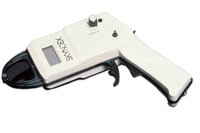 9th Jul 2015
9th Jul 2015
Why Body Fat Analysis is Important
Working in the fitness industry, at some point, most of my clients ask me how they can lose weight. Most of them have some number they’d like to lose or reach on the scale. The problem with this is the weight on the scale is not really indicative of fitness. For instance, I’ve had clients who weigh around 112 pounds at 5’6”, but have very little muscle tone. These folks may not have weight to lose necessarily, but they aren’t healthy either. That’s why measuring body fat is a more important standard of measure when analyzing one’s body composition and whether adjustments need to be made with regard to diet and exercise. But unless your clients are bodybuilders, bring out the old calipers and you’ll notice most of your clients will get a look like a deer in headlights. This is when patient education is key and communicating why measuring body fat is important.
Body Fat Calipers look intimidating but can be a very powerful tool
for achieving your health and wellness goals
Why measuring body fat is important?
As I stated above, body fat analysis will answer whether adjustments need to be made to a client’s diet and exercise regimen. Additionally, Doctors are adding body fat analysis to wellness assessments because high percentages of visceral and subcutaneous fat are linked to heart disease, inflammatory diseases, diabetes and other health problems. Heart disease is the leading cause of death for people of most ethnicities in the United States. Communicate to clients that body fat analysis will give a better picture of their overall health and whether they are on the right track with their current regimens. Then perform the body fat analysis with respect and care.
How to perform a body fat analysis
Skinfold testing, also known as caliper testing is a commonly used method to determine a clients body fat percentage.
- Measurements are taken at different sites on the right side of the body while the person stands straight but relaxed.
- The 7most popular sites are the triceps (located on the back of the upper arm. Other sites include the biceps (front of the upper arm), subscapula (just below the tip of the right scapula), iliac crest (vertical fold above the hip bone), abdomen (one inch to the right of the belly button), thigh, and chest.
- A pinch of skin is grasped between the thumb and forefinger and it is pulled away from the underlying muscle.
- The width of the skin fold is measured in millimeters with a specially calibrated caliper.
Each measurement is usually taken three times and then the average of the three measurements is recorded. The measurements from each site are entered into the following equation: Body Density = 1.112 - (0.00043499 x sum of skinfolds) + (0.00000055 x square of the sum of skinfold sites) - (0.00028826 x age). There are also some online body fat calculators that allow you to enter in the skinfold measurement and they do the calculating for you.
- This gives a body fat percentage which can then be analyzed on the charts below. These charts are based on research by Jackson & Pollack (which has become the industry standard). The age column is found on the left, the body fat percentages are in the chart, and the colors represent Lean, Ideal, Average, and Above Average ranges. So if you are a 30 year old man, a body fat percentage between 10% and 16% is considered “Ideal” and between 18% and 22% is considered “Average”, and so on.

So, there you have it. Losing weight and getting fit is mostly about math. Make sure your clients understand you need all the numbers in order to create an action plan that leads to the gains or losses they hope to create in their fitness and wellness journey.
For more information about healthcare products please go to ProHealthcareProducts.com









